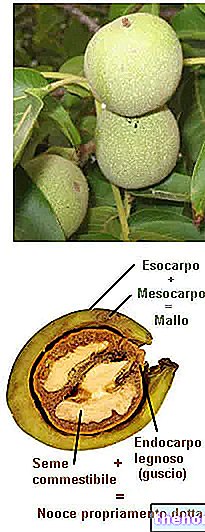Generality
There tequila (pronunciation tekila) is a Mexican distillate obtained from the plant blue agave (Agave tequilana F.A.C. Weber, 1902).
This spirits take the name of the historic city of production (Tequila, located 65km from Guadalajara, in the north-west direction), but it is also produced in large quantities in the highlands (Los Altos) of the Mexican northwest, or in Jalisco.

The typicality of tequila basically derives from the climate and the characteristics of the soil. In the Mexican production areas, the soil is red, volcanic and suitable for the cultivation of blue agave. Every year, more than 300 million plants are harvested in these places. On the other hand, the morphology and the chemical contribution of the plant are changeable according to the specific cultivation area; the agaves of the highlands are larger, aromatic and sweet, while those of the plains have more herbaceous scents.
Under Mexican law, tequila can ONLY be produced in the state of Jalisco and other well-limited areas of the states: Guanajuato, Michoacán, Nayarit and Tamaulipas. Also for American regulations, tequila is a distillate coming exclusively from Mexico (although for a certain commercial agreement, a part of the tequila is bottled in the USA).
The most popular type of tequila has an average alcohol content of between 35 and 55%.
Nutritional Aspects
Tequila is a drink that can be consumed straight or in the formulation of various cocktails; to view some tequila-based recipes, consult the page at this link.
Watch the video
- Watch the video on youtube
Tequila is a spirits obtained by distillation. Its chemical formulation shouldn't show high concentrations of sugars, proteins and fats, but this depends a lot on the type of tequila being examined; it is therefore logical to think that most of the calories are attributable to the ethyl alcohol content.
Like limoncello, maraschino, grappa, gin, Marsala, nocino, Porto, Rum etc., tequila is also NOT suitable for significant consumption (frequent and abundant). Being a spirits, the average portion (to be considered sporadic) should be much lower than that of wine and beer; at most 30-60ml.
The reckless consumption of tequila could be harmful to the tissues and metabolism, especially in the presence of: overweight, hypertension, hypertriglyceridemia and liver, kidney or pancreatic suffering.
The abuse of any spirits is directly related to the degeneration of the esophageal, gastric and duodenal mucosa; this is due to the "increase in gastric acidity, which most often leads to: gastro-oesophageal reflux, gastritis and, in the most serious cases , peptic ulcer.
Production
Despite the current industrialization of the processes, the production of tequila still begins with the manual harvesting of plants, which exploits the deep knowledge of Mexican workers.

After collection, the pinas are cooked in special ovens to hydrolyze (break down) the starch into simple sugars; subsequently, they are crushed by means of a large circular rock (Tahona); waste fibers are fed to animals or used as fuel or to produce paper.
The useful portion, on the other hand, is left to ferment in special tanks (made of steel or wood) for a period of several days. Once the fermentation is completed, the so-called "ordinary" is distilled and, only for the "silver tequila", a second distillation is applied. At this point, the drink can be bottled or aged in cask.
Types of Tequila
There are two categories of tequila: 100% Agave and Mixed; the latter must contain not less than 51% of agave juice and this means that it can reach up to 49% of foreign sugars (glucose or fructose).
The various tequilas also differ in 5 types:
- Blanco or plata (silver): bottled immediately after distillation (even double) or no later than two months of aging in steel vats
- Joven or gold: unaged silver flavored and colored with caramel
- Reposado: aged between 2 months and less than 1 year, aged in oak barrels of varying sizes
- Anejo or vintage: aged between one year and less than three, aged in small oak barrels
- Anejo Extra or ultra aged: aged at least three years aged in small oak barrels.
We remind you that the highland tequilas are always more aromatic than those produced in the plains. Furthermore, if the young tequilas have a not very complex structure, in which the alcoholic scent prevails, the aged ones gain softness and variable characteristics based on the wood or previous use; obviously, the tequilas produced from "agave alone" are qualitatively superior to those with added sugars.
Background
Tequila was born in the 16th century AD. near the city of Tequila, officially established only in 1666. The ancestor of the distillate was an Aztec drink called Octli; this was then called Pulque in 1521 with the advent of the Spaniards, who, having exhausted the brandy stocks, began to produce the agave distillate.
In 1600, Don Pedro Sánchez de Tagle, Marquis of Altamira, began the massive production of spirits in the territories of today's Jalisco. 8 years later the drink was taxed for trade and the license was granted by Charles IV, King of Spain.
Contemporary tequila was produced from the 19th century in Guadalajara.
Don Cenobio Sauza, founder of "Sauza Tequila" and municipal president of "Tequila" (1884-1885), was the first entrepreneur to market the drink in the USA, shortening the name "Tequila Extract" to "Tequila". His nephew (Don Francisco Javier) then managed to obtain the recognition of protection of the original territories (state of Jalisco).
Since the turn of the 20th century, the popularity of tequila has seen significant developments: the "purchase of" Herradura "from Brown-Forman for $ 776 million, the new official Mexican standard for tequila (NOM-006-SCFI-2005) and "purchase of the" Sauza "and" El Tesoro "brands from" Fortune Brands ".
Starting from the beginning of the 21st century, a disease that significantly affects agave plants has spread: Tristeza y Muerte de Agave. This, called TMA, is caused by downy mildew, or mold. This situation has caused a reduction in production of tequila and the related spike in prices; according to market estimates, this complication will likely continue for several more years.
Many distilleries have converted from artisans to industrial production and, to facilitate recognition, each bottle has a "label with a serial number and production specification.
Initially, flavored tequila could NOT use the name "tequila", but since 2004 the "Tequila Regulatory Council of Mexico" has granted this opportunity, with the sole exception of "pure agave tequila".
In July 2006, the most expensive bottle of spirits in the world (Guinness World Record), a $ 225,000 tequila, was sold.
In 2008, Mexican scientists discovered a method of synthesizing small "synthetic diamonds" based on tequila with 40% alcohol. On the other hand, being not very profitable and too small for the production of jewels, the only application remains the commercial-industrial one in computer chips or cutting tools.
Other Alcoholic Alchermes Alcohol test Alcopops Cocktail Alcoholic Alcoholic units calculation Cognac Gin Grappa Alcoholic degree Grappa Limoncino Maraschino Marsala Nocino Prosecco Rum Rum Sherry Sparkling wine Spirits Wine Port wine Vermouth Vodka Vov Whiskey Categories Alcoholic foods Meat Cereals and derivatives Sweeteners Sweets Offal Dried fruit Milk and derivatives Legumes Oils and fats Fish and fishery products Cold cuts Spices Vegetables Health recipes Appetizers Bread, Pizza and Brioche First courses Second courses Vegetables and salads Sweets and desserts Ice creams and sorbets Syrups, liqueurs and grappas Basic preparations ---- In the kitchen with Leftovers Carnival recipes Christmas recipes Light diet recipes Women's, mom's and dad's day recipes Functional recipes International recipes Easter recipes Celiac recipes Diabetic recipes Holiday recipes Valentine's Day recipes Vegetarian recipes Protein recipes Regional recipes Vegan recipes




























